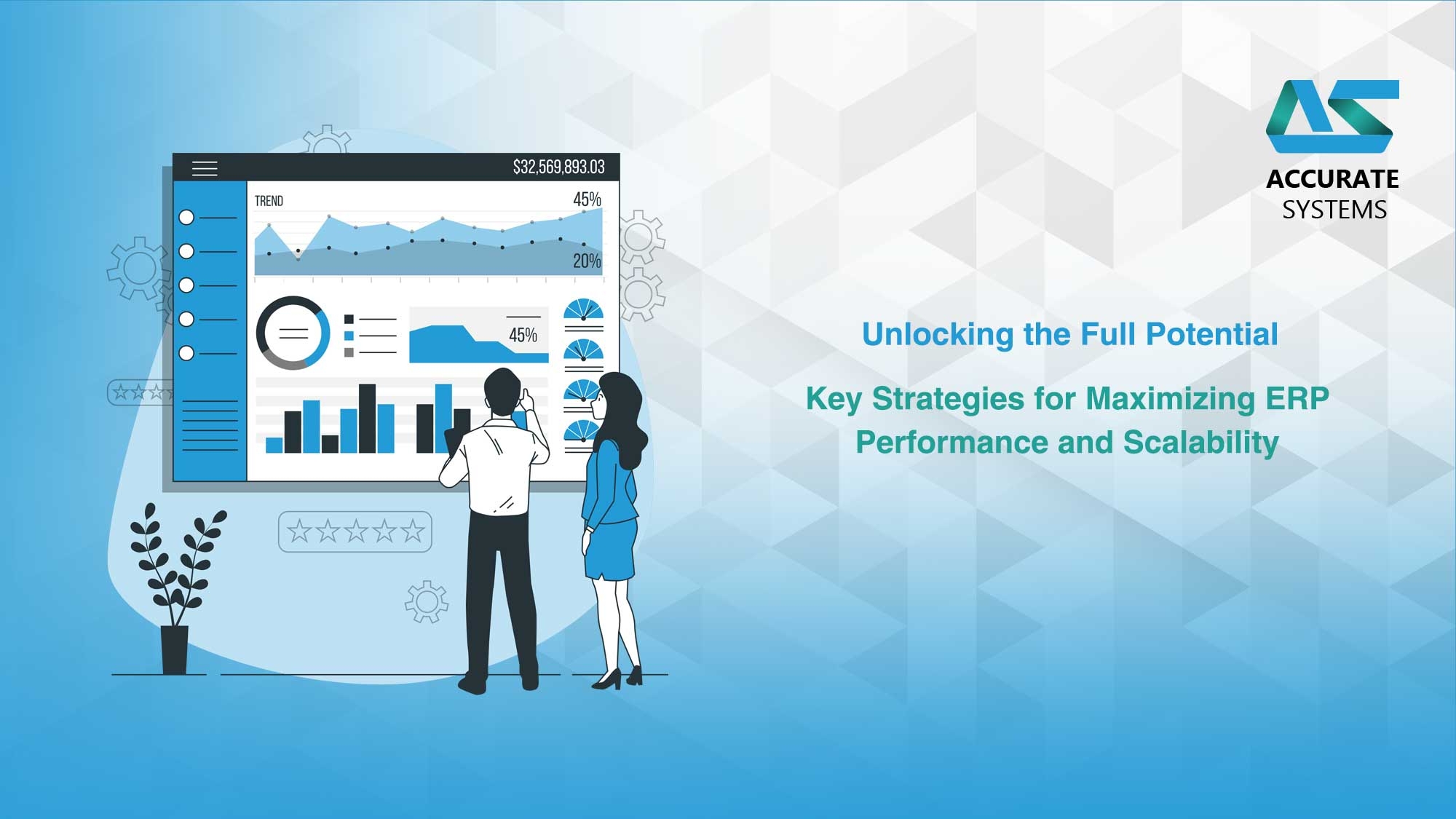Enterprise Resource Planning (ERP) systems are the backbone of many organizations, integrating critical functionalities like finance, inventory, human resources, and customer relationship management. However, to unlock their full potential and ensure long-term success, maximizing both performance and scalability is crucial. Here’s a deep dive into the key factors that contribute to a well-performing and scalable ERP system:
-
Infrastructure Optimization:
-
Hardware Selection:
Choosing the right hardware infrastructure forms the foundation for optimal performance. Factors like server capacity, storage solutions, and network bandwidth need careful consideration based on the organization’s size, data volume, and user base.
-
Regular Maintenance:
Implementing a proactive maintenance plan, including hardware upgrades, software updates, and system optimization, helps prevent performance bottlenecks and potential downtime.
-
Cloud Consideration:
Cloud-based ERP solutions offer inherent scalability and flexibility, allowing organizations to easily adjust resources as needed without significant upfront investments in hardware.
-
Data Management and Integration:
-
Data Quality:
Maintaining clean, accurate, and consistent data is essential for optimal performance. Regular data cleansing processes like identifying and correcting errors, duplicates, and inconsistencies, ensure reliable information and efficient system operations.
-
Data Integration:
Seamless integration between the ERP system and other applications used within the organization is crucial. This minimizes data silos, reduces manual data entry, and improves overall data consistency.
-
Performance Tuning and Customization:
-
System Configuration:
ERP systems often offer various configuration options. Analyzing system usage patterns and strategically configuring settings based on specific needs can optimize performance and user experience.
-
Customizations:
While extensive customizations can impact system stability, strategically implementing essential customizations to automate specific workflows or integrate with unique business processes can enhance efficiency.
-
Scalability and Flexibility:
-
Modular Design:
Opting for an ERP system with a modular design allows organizations to select and implement only the functionalities they need initially. This approach facilitates future expansion by enabling the addition of new modules as the business grows.
-
Scalable Architecture:
The ERP system’s architecture should be designed to accommodate future growth, allowing for easy scaling of resources like processing power, storage, and user capacity when needed. Cloud-based solutions typically offer inherent scalability advantages.
-
Security Measures:
-
Robust Security Protocols:
Implementing robust security measures, including user authentication, access control, and data encryption, safeguards the ERP system from unauthorized access, data breaches, and cyber threats.
-
Regular Security Audits:
Conducting regular security audits helps identify and address potential vulnerabilities promptly, ensuring the system’s integrity and protecting sensitive data.
Additional Considerations:
-
User Training and Support:
Providing comprehensive training to users on effectively utilizing the ERP system’s functionalities is crucial for optimizing performance and ensuring user adoption. Ongoing support ensures users can address any challenges and maximize the system’s benefits.
-
Performance Monitoring:
Continuously monitoring key performance indicators (KPIs) like system response times, user login times, and resource utilization allows for proactive identification and resolution of potential performance issues.
By carefully considering and implementing these factors, organizations can ensure their ERP system operates at peak performance, adapts to changing business needs, and scales effectively to support future growth. Remember, a well-maintained and optimized ERP system is an invaluable asset, driving operational efficiency, improved decision-making, and ultimately, sustainable organizational success.


